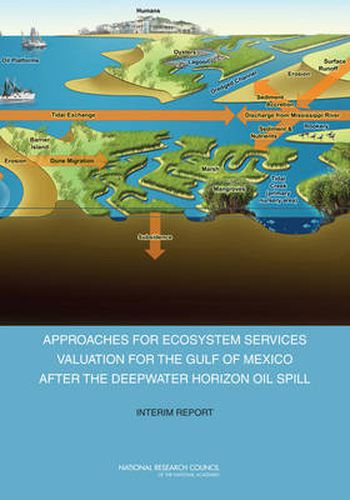Readings Newsletter
Become a Readings Member to make your shopping experience even easier.
Sign in or sign up for free!
You’re not far away from qualifying for FREE standard shipping within Australia
You’ve qualified for FREE standard shipping within Australia
The cart is loading…






On April 20, 2010, the Deepwater Horizon platform drilling the Macondo well in Mississippi Canyon Block 252 (DWH) exploded, killing 11 workers and injuring another 17. The DWH oil spill resulted in nearly 5 million barrels (approximately 200 million gallons) of crude oil spilling into the Gulf of Mexico (GoM). The full impacts of the spill on the GoM and the people who live and work there are unknown but expected to be considerable, and will be expressed over years to decades. In the short term, up to 80,000 square miles of the U.S. Exclusive Economic Zone (EEZ) were closed to fishing, resulting in loss of food, jobs and recreation. The DWH oil spill immediately triggered a process under the U.S. Oil Pollution Act of 1990 (OPA) to determine the extent and severity of the injury (defined as an observable or measurable adverse change in a natural resource or impairment of a natural resource service) to the public trust, known as the Natural Resources Damage Assessment (NRDA). The assessment, undertaken by the trustees (designated technical experts who act on behalf of the public and who are tasked with assessing the nature and extent of site-related contamination and impacts), requires: (1) quantifying the extent of damage; (2) developing, implementing, and monitoring restoration plans; and (3) seeking compensation for the costs of assessment and restoration from those deemed responsible for the injury. This interim report provides options for expanding the current effort to include the analysis of ecosystem services to help address the unprecedented scale of this spill in U.S. waters and the challenges it presents to those charged with undertaking the damage assessment.
$9.00 standard shipping within Australia
FREE standard shipping within Australia for orders over $100.00
Express & International shipping calculated at checkout
On April 20, 2010, the Deepwater Horizon platform drilling the Macondo well in Mississippi Canyon Block 252 (DWH) exploded, killing 11 workers and injuring another 17. The DWH oil spill resulted in nearly 5 million barrels (approximately 200 million gallons) of crude oil spilling into the Gulf of Mexico (GoM). The full impacts of the spill on the GoM and the people who live and work there are unknown but expected to be considerable, and will be expressed over years to decades. In the short term, up to 80,000 square miles of the U.S. Exclusive Economic Zone (EEZ) were closed to fishing, resulting in loss of food, jobs and recreation. The DWH oil spill immediately triggered a process under the U.S. Oil Pollution Act of 1990 (OPA) to determine the extent and severity of the injury (defined as an observable or measurable adverse change in a natural resource or impairment of a natural resource service) to the public trust, known as the Natural Resources Damage Assessment (NRDA). The assessment, undertaken by the trustees (designated technical experts who act on behalf of the public and who are tasked with assessing the nature and extent of site-related contamination and impacts), requires: (1) quantifying the extent of damage; (2) developing, implementing, and monitoring restoration plans; and (3) seeking compensation for the costs of assessment and restoration from those deemed responsible for the injury. This interim report provides options for expanding the current effort to include the analysis of ecosystem services to help address the unprecedented scale of this spill in U.S. waters and the challenges it presents to those charged with undertaking the damage assessment.